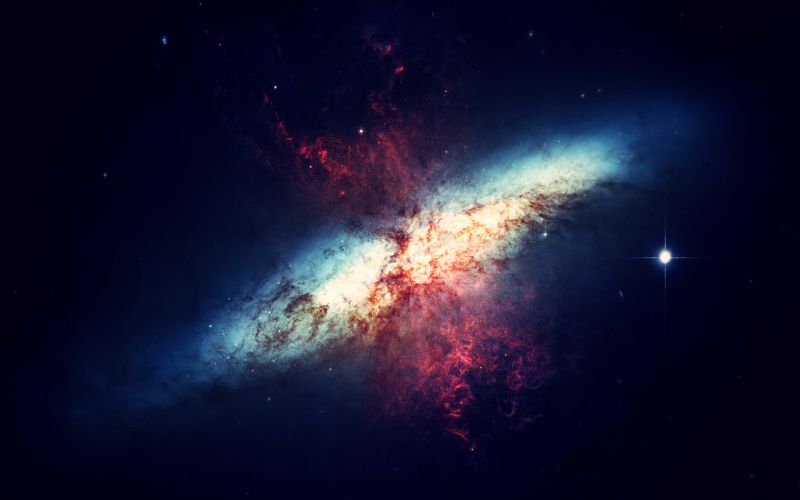[{"id":2040,"link":"https:\/\/dynaverse.astro.uni-koeln.de\/archives\/2040","name":"skao","thumbnail":{"url":"https:\/\/dynaverse.astro.uni-koeln.de\/wp-content\/uploads\/2024\/08\/SKAO_new-e1724843424770.jpg","alt":"SKAO_new"},"title":"SKAO","postMeta":[],"author":{"name":"Steffi","link":"#"},"date":"Nov 15, 2023","dateGMT":"2023-11-15 08:00:00","modifiedDate":"2025-05-23 23:24:44","modifiedDateGMT":"2025-05-23 21:24:44","commentCount":"0","commentStatus":"open","categories":{"coma":"<a href=\"https:\/\/dynaverse.astro.uni-koeln.de\/dynaverse\/infrastructure\" rel=\"category tag\">Infrastructure<\/a>","space":"<a href=\"https:\/\/dynaverse.astro.uni-koeln.de\/dynaverse\/infrastructure\" rel=\"category tag\">Infrastructure<\/a>"},"taxonomies":{"post_tag":""},"readTime":{"min":0,"sec":29},"status":"publish","content":"The access to\u00a0SKAO\u00a0(www.skao.int) via Germany joining the SKA Organisation (PI Prof. Dr. Kramer represents Germany in the\u00a0SKAO\u00a0Board of Directors) and the new collaboration with SKA France that will be enabled by this EXC will put the Bonn-Cologne-J\u00fclich region in a prime position to conduct legacy projects with the telescope, even before it comes fully online. Delivering a suite of MPIfR in-house built 64+2 S-Band receivers (1.7 - 3.5 GHz) for the\u00a0SKAO\u00a0precursor MeerKAT, a massive beamformer, and\u00a0HPC\u00a0clusters for online data-processing, the MPIfR has obtained dedicated observing time at MeerKAT. MPIfR also provides a proto-type antenna for\u00a0SKAO."},{"id":1782,"link":"https:\/\/dynaverse.astro.uni-koeln.de\/archives\/1782","name":"fyst-ccat","thumbnail":{"url":"https:\/\/dynaverse.astro.uni-koeln.de\/wp-content\/uploads\/2023\/08\/Szizze-FYST-Teleskop.png","alt":""},"title":"FYST\/CCAT","postMeta":[],"author":{"name":"admin","link":"#"},"date":"Oct 28, 2023","dateGMT":"2023-10-28 08:00:00","modifiedDate":"2025-05-23 23:25:38","modifiedDateGMT":"2025-05-23 21:25:38","commentCount":"0","commentStatus":"open","categories":{"coma":"<a href=\"https:\/\/dynaverse.astro.uni-koeln.de\/dynaverse\/infrastructure\" rel=\"category tag\">Infrastructure<\/a>","space":"<a href=\"https:\/\/dynaverse.astro.uni-koeln.de\/dynaverse\/infrastructure\" rel=\"category tag\">Infrastructure<\/a>"},"taxonomies":{"post_tag":""},"readTime":{"min":0,"sec":50},"status":"publish","content":"UoC (through the group of PI Prof. Dr. Dominik Riechers) and UB (through the groups of Prof. Dr. Frank Bertoldi and PI Prof. Dr. Frank Bigiel), together with the cosmology group let by Prof. Dr. Komatsu at the Max- Planck-Institute for Astrophysics (MPA) in Garching, are the German CCAT Consortium partners and support the CCAT\u00a0observatory costs from a DFG Large-scale instrumentation grant and their central resources (www.ccatobservatory.org).\u00a0 The German Consortium currently contributes a 25% share, and one of the two first light instruments, CHAI, which will result in substantial guaranteed time observations. Thus, FYST\/CCAT will contribute to ARC1 (the core observational program GeCO will be led by UoC) and ARC3 (studies of the epoch of reionisation will be co-led by UoC and UB partners).\n\n\n\nThe German Consortium currently contributes a 25% share, which will result in substantial guaranteed time observations. Thus, FYST\/CCAT will contribute to ARC1 (the core observational program GeCO will be led by UoC) and ARC3 (studies of the epoch of reionisation will be co-led by UoC and UB partners)."},{"id":3604,"link":"https:\/\/dynaverse.astro.uni-koeln.de\/archives\/3604","name":"submillimeter-instrumentation","thumbnail":{"url":"https:\/\/dynaverse.astro.uni-koeln.de\/wp-content\/uploads\/2023\/09\/csm_Phasengitter_7dc8e61f88.jpg","alt":""},"title":"Submillimeter Instrumentation","postMeta":[],"author":{"name":"Ana","link":"#"},"date":"Sep 21, 2023","dateGMT":"2023-09-21 08:30:00","modifiedDate":"2025-09-04 12:45:54","modifiedDateGMT":"2025-09-04 10:45:54","commentCount":"0","commentStatus":"closed","categories":{"coma":"<a href=\"https:\/\/dynaverse.astro.uni-koeln.de\/dynaverse\/infrastructure\" rel=\"category tag\">Infrastructure<\/a>","space":"<a href=\"https:\/\/dynaverse.astro.uni-koeln.de\/dynaverse\/infrastructure\" rel=\"category tag\">Infrastructure<\/a>"},"taxonomies":{"post_tag":""},"readTime":{"min":0,"sec":44},"status":"publish","content":"Seeded by in-house instrumentation developments and the operation of the KOSMA-3m telescope on the Gornergrat in Switzerland followed by NANTEN2 (together with Nagoya, Japan) in Chile, the UoC has successfully deployed the HIFI instrument on the Herschel Space Observatory\u00a0HIFI10 and the SOFIA\/GREAT THz multi-beam spectrometer in the stratosphere GREAT12. GREAT, in particular, has led to the majority of the scientific publications from the SOFIA airplane-mounted telescope among all its instruments over the entire mission.These previous works have now progressed into the development of the innovative CCAT\/FYST (sub-)mm survey telescope with first light set for late 2025 (Parshley et al., 2018).\n\n\n\nIn support of CCAT\/FYST instrumentation, the group of Prof. Dominik Riechers has received a DFG Large-scale instrumentation grant to build the high-frequency channel of the CHAI hetreodyne spectrometer, which is key to carry out the core observational program GeCO, which is led by the UoC."},{"id":2047,"link":"https:\/\/dynaverse.astro.uni-koeln.de\/archives\/2047","name":"laboratory-astrophysics","thumbnail":{"url":"https:\/\/dynaverse.astro.uni-koeln.de\/wp-content\/uploads\/2023\/09\/csm_logo_cctzs_accf489e4e.jpg","alt":""},"title":"Laboratory Astrophysics","postMeta":[],"author":{"name":"Steffi","link":"#"},"date":"Sep 15, 2023","dateGMT":"2023-09-15 09:53:06","modifiedDate":"2025-09-04 12:33:51","modifiedDateGMT":"2025-09-04 10:33:51","commentCount":"0","commentStatus":"open","categories":{"coma":"<a href=\"https:\/\/dynaverse.astro.uni-koeln.de\/dynaverse\/infrastructure\" rel=\"category tag\">Infrastructure<\/a>","space":"<a href=\"https:\/\/dynaverse.astro.uni-koeln.de\/dynaverse\/infrastructure\" rel=\"category tag\">Infrastructure<\/a>"},"taxonomies":{"post_tag":""},"readTime":{"min":0,"sec":26},"status":"publish","content":"The Cologne laboratory astrophysics group lead by Prof.Schlemmer harbours one of the best equipped high-resolution spectroscopy laboratories. The infrastructure comprises several THz absorption spectrometers in the frequency range 0.1 - 2 THz, two chirped pulse Fourier transform spectrometers in the microwave and cm wavelength regimes, an infrared laser multi-path absorption spectrometer with a free jet source, and a set of custom-built ion-trap apparatus. The operation of these facilities as international user facilities has been DFG-funded via the Cologne Centre for THz Spectroscopy as a \u2018DFG core facility\u2019."},{"id":2045,"link":"https:\/\/dynaverse.astro.uni-koeln.de\/archives\/2045","name":"computing","thumbnail":{"url":"https:\/\/dynaverse.astro.uni-koeln.de\/wp-content\/uploads\/2023\/09\/csm_RAMSES_CDU-Panel_Specs_fe9ef05381.png","alt":""},"title":"Computing","postMeta":[],"author":{"name":"Steffi","link":"#"},"date":"Sep 15, 2023","dateGMT":"2023-09-15 09:51:54","modifiedDate":"2025-09-04 12:35:58","modifiedDateGMT":"2025-09-04 10:35:58","commentCount":"0","commentStatus":"open","categories":{"coma":"<a href=\"https:\/\/dynaverse.astro.uni-koeln.de\/dynaverse\/infrastructure\" rel=\"category tag\">Infrastructure<\/a>","space":"<a href=\"https:\/\/dynaverse.astro.uni-koeln.de\/dynaverse\/infrastructure\" rel=\"category tag\">Infrastructure<\/a>"},"taxonomies":{"post_tag":""},"readTime":{"min":0,"sec":32},"status":"publish","content":"With the new HPC capabilities, such as those soon to be provided by FZJ, it will be possible to model whole galaxies with sub-parsec resolution and to include, e.g., (self-)gravity, radiative transfer, magnetic fields, and chemical networks. The UoC\/RRZK has recently successfully applied for a Tier-2 system (\u201cCHEOPS2\u201d), which will be installed in the University\u2019s new server hall at the end of 2023 (after some delays caused by the COVID-19 pandemic). In addition, a smaller-scale Tier-3 system for UoC-wide computing has just been approved and will be set up in 2025\/2026. Similarly, a Tier-3 HPC-cluster (\u201cMarvin\u201d) was purchased by the UB and will be available from Summer 2023 onward."},{"id":2043,"link":"https:\/\/dynaverse.astro.uni-koeln.de\/archives\/2043","name":"laboratory-ir-instrumentation","thumbnail":{"url":"https:\/\/dynaverse.astro.uni-koeln.de\/wp-content\/uploads\/2023\/09\/csm_trap3_3adcdc4434.jpg","alt":""},"title":"Laboratory IR instrumentation","postMeta":[],"author":{"name":"Steffi","link":"#"},"date":"Sep 15, 2023","dateGMT":"2023-09-15 09:51:15","modifiedDate":"2025-09-04 12:43:49","modifiedDateGMT":"2025-09-04 10:43:49","commentCount":"0","commentStatus":"open","categories":{"coma":"<a href=\"https:\/\/dynaverse.astro.uni-koeln.de\/dynaverse\/infrastructure\" rel=\"category tag\">Infrastructure<\/a>","space":"<a href=\"https:\/\/dynaverse.astro.uni-koeln.de\/dynaverse\/infrastructure\" rel=\"category tag\">Infrastructure<\/a>"},"taxonomies":{"post_tag":""},"readTime":{"min":0,"sec":21},"status":"publish","content":"At UoC, key laboratory infrastructures have been established (Prof. Labadie) for developing the (third-party funded) new infrared instrumentation and photonics technologies that will equip community and visitor instruments at the ELT and the VLTI, e.g., ELT\/METIS or the beam combiner Nulling Observations of exoplaneTs and dusT (NOTT) for the VLTI. In the recent past, comparable laboratory support from UoC has enabled the GRAVITY(+) instrument, which is now established worldwide as the workhorse for infrared interferometry."},{"id":161,"link":"https:\/\/dynaverse.astro.uni-koeln.de\/archives\/161","name":"simons","thumbnail":{"url":"https:\/\/dynaverse.astro.uni-koeln.de\/wp-content\/uploads\/2023\/06\/SO_Logo_final_large_reversed.png.webp","alt":""},"title":"Simons Observatory","postMeta":[],"author":{"name":"admin","link":"#"},"date":"Jun 6, 2023","dateGMT":"2023-06-06 16:19:43","modifiedDate":"2025-05-23 23:26:14","modifiedDateGMT":"2025-05-23 21:26:14","commentCount":"0","commentStatus":"open","categories":{"coma":"<a href=\"https:\/\/dynaverse.astro.uni-koeln.de\/dynaverse\/infrastructure\" rel=\"category tag\">Infrastructure<\/a>","space":"<a href=\"https:\/\/dynaverse.astro.uni-koeln.de\/dynaverse\/infrastructure\" rel=\"category tag\">Infrastructure<\/a>"},"taxonomies":{"post_tag":""},"readTime":{"min":0,"sec":11},"status":"publish","content":"In combination with the recent hiring of PI Jun-. Prof. Andrina Nicola, the Faculty of Mathematics and Natural Sciences at UB will have an institutional membership of the\u00a0AIfA\u00a0in the\u00a0Simons Observatory (https:\/\/simonsobservatory.org), which plays a key role in\u00a0ARC3."}]

